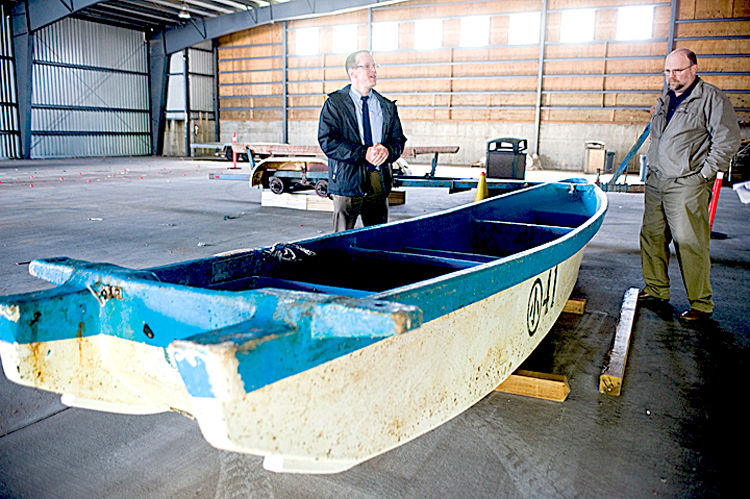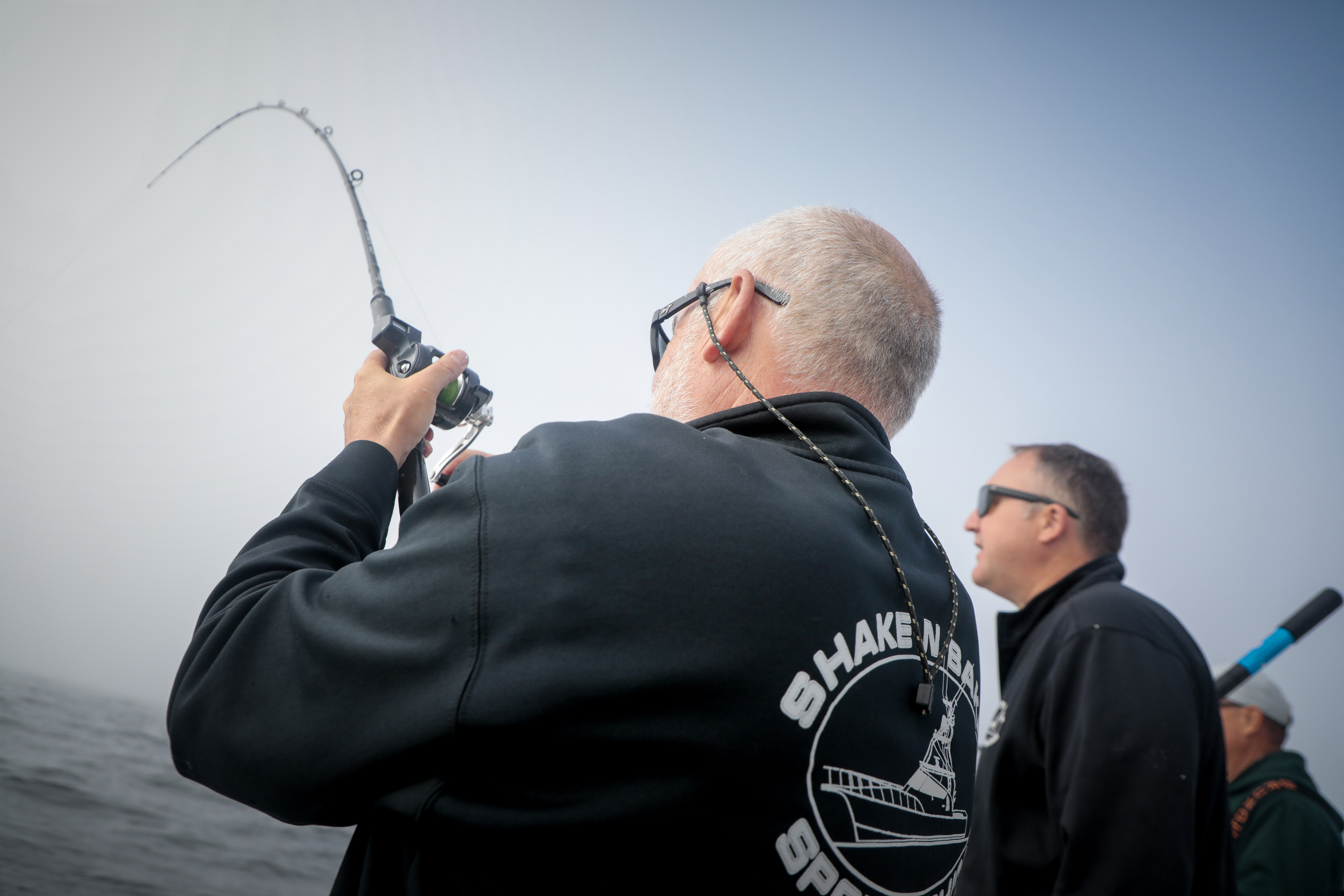Japanese fishing boat to tell tsunami story
Published 5:00 pm Monday, April 29, 2013

- <p>Dave Pearson, left, deputy director of the Columbia River Maritime Museum, and Jeff Smith, the museum curator, describe plans to create a Japanese tsunami exhibit centered on the Saishomaru, a 20-foot fishing boat that floated from the island of Honshu to Washington's Long Beach Peninsula.</p>
By EDWARD STRATTON
Trending
For the Observer
When 72-year-old Katuo Saito of Rikuzentakata City in the Japanese prefecture of Iwate moored his boat on land in March 2011, he could have never guessed that hed be inadvertantly donating it to the Columbia River Maritime Museum two years later and more than 4,000 miles across the Pacific Ocean.
Trending
Nonetheless, the museum is preparing a Japanese tsunami exhibit around Saitos 20-foot, blue and white fishing boat, named Sai-sho-maru. After being ripped away by the Japanese tsunami of 2011, the boat floated upright from the island of Honshu to the Long Beach Peninsula.
I was very happy to hear the boat was not broken down, said Saito, whos since bought a new boat, the Iwate Nippo (Iwate Daily) newspaper reported.
Sai-sho-maru, which has a sizeable hole on the port side, washed up on the Peninsula March 19, little more than a week after the two-year anniversary of the Japanese tsunami, which struck March 11, 2011.
David Pearson, deputy director of the museum, said that the Japanese consulate in Seattle helped track down the boats owner using a photo, name and serial number, and eventually found Saito, who didnt want it back. Cape Disappointment State Park later donated it to the museum, which stored it for some time in plain view outside its main building before moving it into the former Astoria Builders Supply lumber warehouse, its new storage area.
It helps connect us globally, said Jeffrey Smith, curator for the Maritime Museum. We understand that there are fishermen across the ocean doing what were doing, and that what happens in the ocean affects all of us in one way or another.
The human tragedy-side of it is hard to get a hold of, but I think thats something we need to remember when things like this show up, that there is a huge story behind. it.
The result of the tsunami was that 95 percent of the fishing boats in that area were destroyed completely gone. So you can imagine the kind of impact that would have on a community relying on fisheries, to have 95 percent of your infrastructure taken away just like that.
The boat is what Smith calls a three-plank design, very simplistic with one wooden plank on the bottom and one on each side.
It would be wood stringers, foam and fiberglass, said Pearson, adding that the museum has been looking for such an intact artifact from the tsunami for more than a year. This is an exact reproduction of the wood boats they used to build, the traditional design.
The museum is planning an exhibit for the summer based around the boat and its backstory. It is trying to have someone interview Saito in Japan to get even more background on the boat and what it meant to him.
The story is the damage to the boat, said Pearson. So our interest is to make it as stable as possible, and then leave as much as we can.
Some things that didnt stay on were the estimated 30 to 50 types of plants and animals attached to the boat when it washed ashore. The Seaside Aquarium has on display a small, dark grey and white striped beakfish that, along with four others, was taken from the fish hold near the stern of the vessel. No one is sure why or how long the fish were there, but Saito said they likely made it in while the boat floated across the ocean.
The museums still watching for artifacts as they wash up, said Pearson. To me, this was a natural disaster of unimaginable proportions, 5,000 miles away across the ocean, two years ago, and here we are looking at the object that washed up from that. Its incredible when you combine all the pieces.
Theres a lot of story that can be told in this boat.
A Youtube video shows the three-plank boats as they fished: www.youtube.com /watch?v=dIw0S7sr2js









